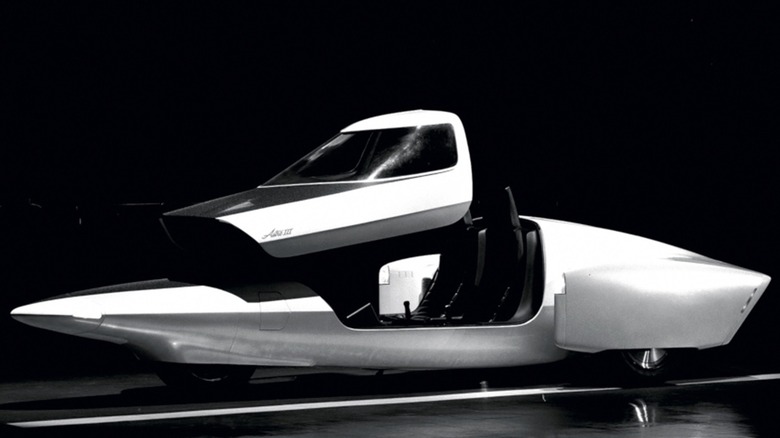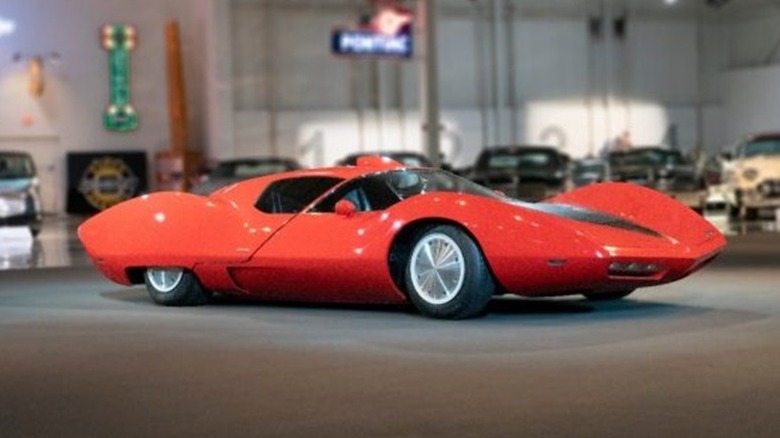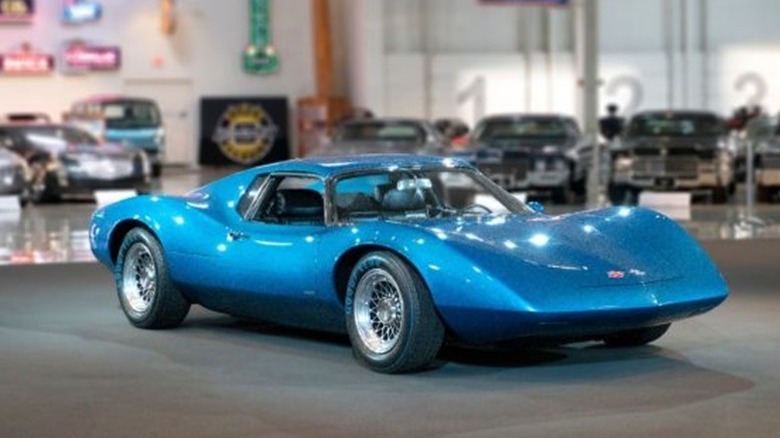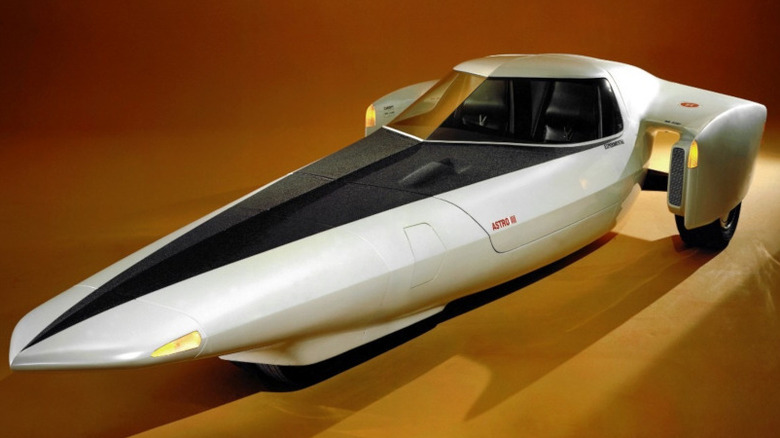The Crazy Chevy Astro Experimental Concept Cars You Likely Didn't Know Existed
General Motors is known for its popular vehicles like the Corvette and Escalade, both of which are seen as staples of American car culture. However, GM has also experimented with some crazy prototypes throughout history, including three almost-forgotten concepts in the late 1960s. GM created three Astro experimental vehicles meant to showcase aerodynamic car designs from the future that have a focus on aerodynamics and advanced concepts.
The three Astro concepts were never fully conceptualized, and a single prototype of each is now kept in the General Motors Heritage Center, sometimes hidden from the public. But car enthusiasts can't get enough of their wild appearance and crazy performance choices. Even in the modern world, the three cars look like they are from a far-off future. While all completely different from one another, the Astro experimental vehicles are all examples of innovation ahead of their time. From a rear-engine Corvette lookalike to a jet-inspired three-wheeler, here are the Astro experimental cars you may have never seen before.
1967 Chevrolet Astro I Experimental
GM revealed the Chevrolet Astro I at the 1967 New York Auto Show, showcasing the car's "visual potential of automobile aerodynamics." Designed by Larry Shinoda, the stylish and futuristic design was meant to have very low drag thanks to its low roof line and a higher back. It was made with fiberglass, keeping it low weight for better acceleration when paired with its Corvair flat six engine that produced 240 horsepower. This air-cooled engine had been in production since 1961, used in the Chevrolet Corvair.
A lot of its design elements look straight out of a science fiction movie, even by today's standards — but it all played a part in the Astro I's performance. The big rounded areas covering the back wheels gave it a retro vision of the future. It also featured a pop-up canopy section rather than typical doors — this was to make the car easier to get inside since it was so incredibly low. What made this innovation even wilder was the fact that the doors lifted the seats up with it, allowing people to simply sit on the seats from a comfortable height before they were lowered as the section was closed.
The top speed of the Chevrolet Astro I is unknown. The single existing model currently resides in the General Motors Heritage Center in Detroit, Michigan.
1968 Chevrolet Astro II Experimental
GM Design and GM Research wanted to create a mid-engine Corvette, and the Astro II was their first prototype for this concept. The extra curvy and sleek body hid a Mark IV V8 engine that powered the rear wheels using a two-speed transaxle. This placement helped fit the larger engine in the pretty compact car, which was only 43.7 inches tall. The engine produced 400 horsepower, which is very powerful for a vehicle weighing just 3,400 pounds.
So why wasn't the Astro II ever produced with such impressive performance and stylish looks? At the time, the C3 Corvette had great sales — GM sold 28,566 in 1968 alone. It was basically a matter of "why fix something that ain't broke?" The 1963 Pontiac Tempest two-speed rear end was another issue, since the two-speed automatic was out of production, and past Corvettes were criticized for being automatic anyway. With nowhere near enough manual transaxles available to mass produce the Astro II, it's now on display at the National Corvette Museum.
1969 Chevrolet Astro III Experimental
So, the last two definitely looked like cars — but the Astro III is the most out there of the three. The 1969 experimental car looks like a wheeled jet, and it had the advanced technology to match. Developed by Bill Mitchell, the show car was meant to represent futuristic engineering and design. It was a two-passenger, three-wheeled vehicle that GM envisioned as a high-performance vehicle that would be on restricted access highways of the future.
The Astro III had a power canopy that moved forward and upward when drivers wanted to climb in the cockpit. The aircraft-style interior used a closed-circuit television to ensure a clear rear view. It also had drivers control two joysticks instead of a steering wheel. It was powered by a gas turbine engine that was used in helicopters around that time. While its performance was impressive, it was truly the design that took precedence. When it was first displayed at the Chicago Auto Show, the fighter jet-inspired shape and interior design caught the attention of car enthusiasts. The three wheels didn't seem very practical to the general public (although many three-wheeled cars exist today), but the appearance was never forgotten.



